Contents
Hawthorn (in other Slavic languages “glod”) is an extremely interesting berry, with a very unusual range of tastes and aromas. Traditionally, it goes to the preparation of a strong tincture. But practice has shown that wine can also be made from it – you only need some additional ingredients, some equipment, direct hands. Well, the correct, proven recipes that the “Rum Diary” is happy to provide in today’s article!
Of course, hawthorn is far from the best raw material for winemaking. It has very little juice, sweetness, acidity. Even the simplest recipe for homemade hawthorn wine involves the addition of additives – water, sugar, wine yeast, dressings, acids. If you are too lazy to fool around, it is easier to make a classic hawthorn tincture. For those who are not afraid of difficulties, we offer three excellent recipes for hawthorn wine – on fresh, dry, frozen berries, both with additives and without them – for every taste!
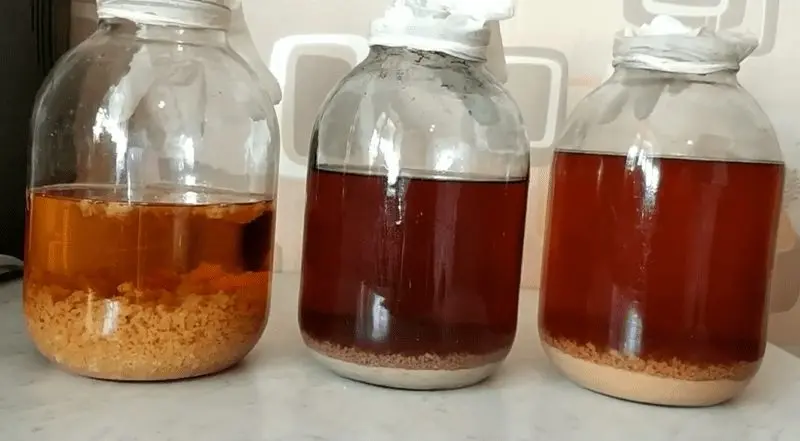
A simple Polish recipe for homemade hawthorn wine
Frozen berries are best suited for this wine – freezing destroys pectins and allows the fruit to give away the miserable juice that it contains, and promotes the release of natural fruit sugars. Fresh berries are recommended to put in the refrigerator for at least 2-3 days. Of course, you can simply collect the hawthorn, as it should be, after the first frost – in this case, nature will do everything for us.
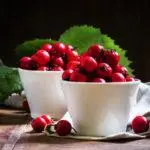
- 5 kg frozen hawthorn
- 9-10 liters of unboiled water
- 3,5 kg of granulated sugar
- A mixture of tartaric acids (or lemon) – 3 tsp
- wine yeast – according to package instructions
- yeast nutrition – optional
Since the temperature is low, the wild yeast on the surface of the berries is already dead. We will definitely need wine yeast – they can be purchased at a specialized store. For kraynyak, you can use raisin sourdough.
- Before freezing, wash the berries, throwing out rotten, moldy and spoiled fruits. We remove the hawthorn from the freezer and let it thaw naturally.
- We dissolve 2,5 kg of sugar in 6 liters of water. You can just stir, you can boil the syrup – just remember to cool it to room temperature before pitching the yeast! At the same time, we ferment the yeast in a small amount of warm water – if this is necessary to do according to the instructions.
- We move the thawed hawthorn into a bottle (about 15 liters for such a sample of ingredients, it is necessary that at least a third of the free space remains in the jar), pour syrup, add yeast, acid and leave in a warm place, covering the neck with gauze or a cloth.
- When signs of fermentation appeared – a kvass smell, a foamy cap, gurgling – we put a water seal on the container, transfer it to a dark place with a temperature of 18-23⁰. Depending on the selected yeast, temperature and other factors, fermentation can last from 5 to 10 days.
- After the shutter has stopped gurgling, the wine has become slightly lighter, and the pulp of the hawthorn has fallen to the bottom, the liquid must be drained, and the pulp must be squeezed out in any way possible. Add the remaining water and sugar according to the recipe, mix the liquid thoroughly. Let’s taste it. If sugar or acid is not enough for your taste – add, the wort should be slightly sour and sweet.
- For secondary fermentation, the bottle should be filled almost to the top – 90 percent. We transfer the container to a cool dark place.
- Fermentation usually lasts from one and a half to two months. At this time, young hawthorn wine needs to be decanted from time to time – drained from the sediment through a straw. This must be done so that the drink is better clarified and does not acquire an unpleasant bitterness from dead yeast.
- When the sediment no longer appears, the water seal does not show signs of life, and the wine has acquired a beautiful amber hue – it’s time to start bottling. Preliminarily, the drink can be fixed (how, with what and why, read here), if desired, sweeten. You can start tasting after six months, or better – a year after bottling.
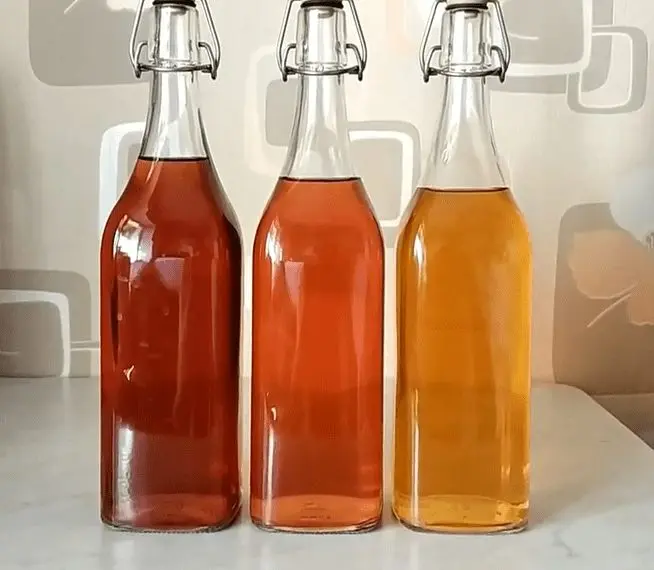
Classic American hawthorn wine – dry or fresh
Residents of the northern United States know and love hawthorn. It grows both wild berries and many cultivated, large-fruited varieties that can reach the size of a small apricot. But our usual blood-red hawthorn is quite suitable for this recipe.
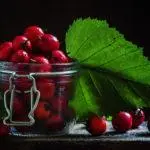
- 5 kg fresh or 2 kg dried hawthorn
- 8 small oranges
- 4 medium lemons
- 5 kg of sugar
- 15 liters of unboiled water
- wine yeast, top dressing – optional.
A slightly more complex recipe. We will need a large saucepan to boil the berries in boiling water. The goal is the same as in freezing: separation of juice, softening of fruits, destruction of pectins.
- Wash the hawthorn and sort it out. Dried berries can be pre-soaked by leaving overnight in cold water. Fresh fruits can also be soaked for 15 minutes – all possible worm bugs will float to the surface during this time and it will be easy to remove them.
- Berries are well crushed with a rolling pin or pusher. Citrus fruits are cut into pieces right along with the skin. We boil water, add all the sugar and fruits to it. Fresh hawthorn is cooked for a very short time – about 5 minutes, dried – up to half an hour. Turn off the fire, cover the container with a lid and let cool. After cooling, we insist the liquid for another day.
- Drain the infusion, carefully squeeze the remains of the fruit in any convenient way. Pour into a bottle or other fermenter so that at least a third of the free space remains in it – it is necessary for the foamy “cap”. Add pre-fermented yeast along with top dressing, mix everything well.
- When fermentation has begun, we put a water seal on the bottle, transfer it to a warm, dark place. Primary, as in the previous recipe, lasts from 5 to 10 days. After the end of fermentation, pour the wine into a smaller container – so that it occupies almost the entire space. We put it under a water seal again, but already in a cool dark place.
- During fermentation, the drink should be decanted occasionally – once every 2-3 weeks. When the sediment has ceased to fall out, and the wine has become completely transparent, you can start bottling – this usually happens after 2-3 months of secondary fermentation. Previously, hawthorn wine can, again, be fixed or stabilized with Campden tablets (sulfur dioxide) – read in detail about the pros and cons of the latter method in this analysis.
- A drink prepared in this way requires aging in bottles – six months, and preferably a year, in a cool, dark, not too wet and not too dry cellar or cellar. Your patience will return a hundredfold – after a while, hawthorn wine will become even more delicious!
Homemade wine from hawthorn and chokeberry
This is already our, domestic recipe, without any sulfur dioxide and other troubles. Gives a beautiful, dark amber wine, with a bright, rich aroma. Chokeberry can, in principle, not be used, replacing its weight with pure hawthorn. The ingredients also contain apple juice – you need to use homemade, freshly squeezed, from Antonovka or other acidic varieties, it is needed to acidify the must. You can replace it with lemon juice – 4-5 pieces for our volume will be enough, but you will need to add the appropriate amount of water.
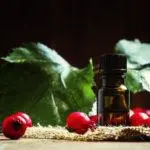
- 1,2 kg fresh hawthorn
- 0,6 kg chokeberry
- 1 kg of sugar
- 2 l apple juice
- 2 liters of unboiled water
- a glass of yeast starter
The author recommends using rye sourdough in this recipe – as for kvass, you can find its recipe in this article. But it seems to me that raisins or, for example, raspberry sourdough will fit in here much better – fruit to fruit, grain to grain and all that. In general, it’s up to you to decide. Naturally, light sourdough can be replaced with any wine yeast.
- We crush the berries with a rolling pin, add 2 cups of sugar, all the water and juice, sourdough or yeast. Mix everything thoroughly and leave in a warm place under gauze or a light cloth.
- All this our mess should ferment within 2 days – foam will appear, the corresponding smell, movement will begin in the jar. Everything goes according to plan – we install a water seal on the tank. Well, or at least a rubber glove with a hole.
- After a week, when the fermentation begins to calm down, the wine must be drained, and the pulp must be carefully squeezed through gauze or a tulle cloth. Add two more cups of sugar to the liquid and send it under the water seal again.
- According to this recipe, the wine roams much longer than the previous two – up to a month or even more. When the water seal completely stops showing signs of life, and a dense sediment forms at the bottom of the can, it’s time to move on to the next step.
- We decant the wine and pour it into another, smaller jar – so that the volume is almost completely occupied by the liquid. Add the rest of the sugar – another glass. We put the water seal in place and move the fermenter to a darkened cool room for another 2-3 months. Periodically, the wine must be decanted with a straw. You can drink after six months of aging in bottles.
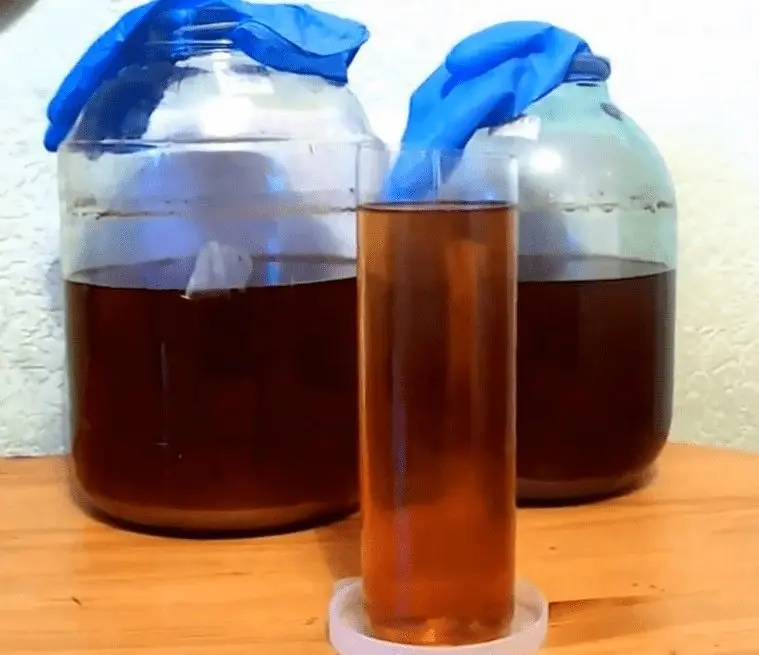
Even according to the simplest recipe, homemade hawthorn wine requires aging – you can try it at least 8-9 months after the start of preparation. But believe me, this drink is a little more than fully justifies the patience and your efforts invested in it! The wine is full, rich, very fragrant. With aging, the taste of added sugar is completely smoothed out, the drink acquires its own, original character. Properly made hawthorn wine, if it does not surpass other fruit and berry wines – currant, raspberry, cherry – in terms of flavor and aroma, it certainly does not concede to them!









